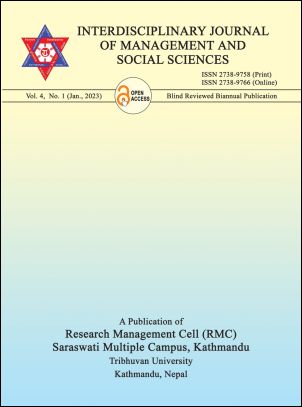The Nepalese Labour Market; Pre & Post Application of Contribution Based Social Security Fund Act
DOI:
https://doi.org/10.3126/ijmss.v4i1.54100Keywords:
Contribution-based Social Security Fund (CBSSF), Nepal Labour Force Survey (NLFS), Labour Force Participation Rate (LFPR), Social Security Fund (SSF), International Labour Organization (ILO), Employees Provident Fund (EPF), Protection Scheme, ContributorsAbstract
The aim of this study is to analyze the psychology of workers after applying a defined contribution plan in public and private organizations in Nepal. This study employed quantitative research methodology to quantify the factors affecting the defined contribution plan. In addition, the study used primary and secondary data. The data were collected using the questionnaire method from people working in industries, trade, schools, colleges, hospitals, and other sectors. The hundred responses are from the survey study. The finding of the study depicted that there is a significant difference between the application and non-application of CBSSF. It indicated that the majority of workers perceived that they had received less cash after the use of the CBSSF. In addition, the study revealed that the majority of workers think benefits after retirement are not good after the application of CBSSF. The findings of the study can be used by policymakers, such as the Nepal government and private sector organizations, to improve the well-being of Nepalese workers after their retirement from jobs.

